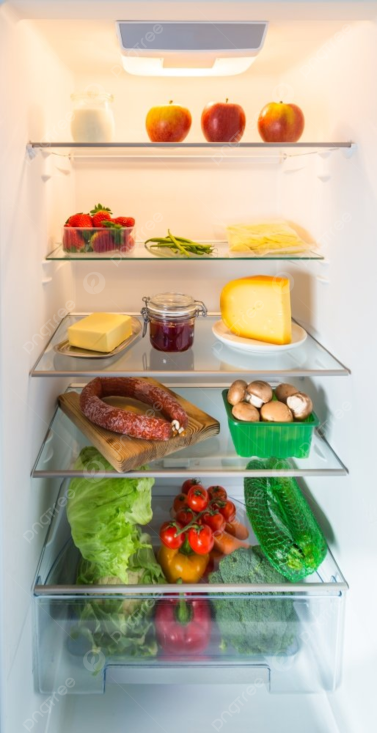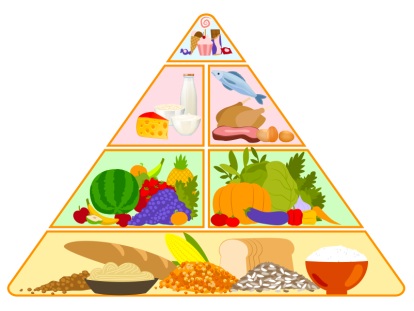Відкритий урок на тему " Харчування" для 7 класу
План-конспект
уроку з англійської мови
по темі :
«Харчування» у 7 класі
ОЗО «Миргородський ліцей «Лінгвіст»
Миргородської міської ради Полтавської області»
Вчитель : Діана Вікторівна Гребінник
Миргород, 2025
Тема : «Харчування»
Підтема : «Здорове харчування»
Змістова лінія :
1.Здоров’я і безпека” : Виховання учня як фізично повноцінного члена суспільства, який здатний дотримуватися здорового способу життя.
2.Підприємливість та фінансова грамотність»: сформувати практичні вміння учнів в аспекті фінансових питань ( покупки в супермаркеті) та практичних навичок при виборі продуктів здорового харчування.
Очікувані результати:
- знати назви продуктів харчування та вміти їх класифікувати як продукти здорового та шкідливого харчування;
- мати розуміння злічуваних та незлічуваних продуктів харчування та вміти використовувати їх квантативи;
- вміти вести бесіду з продавцем у магазині з використанням особистого досвіду;
- вміти використати вивчені лексичні одиниці, структури, граматичний матеріал в усному мовленні.
Оснащення : флешкартки по темі «Їжа»;звукозапис пісні та аудіомовлення; презентація з теми; роздатковий матеріал; інтерактивна дошка.
«Enjoy Your Meal»
Plan
1.Greetings and aims.
2.Warming-up.
3.Tastes differ.
4.A test on tastes.
5.Antonyms.
6.We are hungry.
7.Countable and uncountable nouns.
8.A fridge.
9.Food shops.
10.Shopping list.
11.A song.
12.At the shop.
13.Healthy and junk food.
14.Proverbs and sayings.
15.Listening.
16.Project writing.
17.Let’s brew tea.
18.An interview.
19.Table manners.
20.Jumbled sentences.
21.Summing up.
1.Greetings and aims.
T. –Good afternoon, dear pupils!
I’m glad to see you.
Today we shall speak about food.
It is the most essential part of our life. We can’t live without it.
I wonder why is food so important for us?
S1 - Food gives us much energy.
S2 - Food helps us to be healthy and strong.
S3 - Food helps us to be a cheerful.
S4 - Food helps us to be in a good mood.
S5 – Food gives us life.
2.Warming – up.
T. – To begin with I’d like to ask you some questions on the theme.
Are you ready? Let’s start.
1. How many meals a day do people usually have?
2. What are they?
3. What do you usually have for breakfast?
4. Where do you have dinner: at home or at school?
5. What is your favorite dish?
6. What is a traditional Ukrainian dish for dinner?
7. What food should you eat to be lively and energetic?
8. What do you dislike eating? Why?
9. Can you cook? What can you cook yourself?
10. Why do people enjoy fast food?
11. Do you eat at regular hours?
12. Why do people eat?
3.Tastes differ.
T. – While speaking about food we should mention a proverb «Tastes differ». Do you know it?
S1 – Yes, I do. Смаки різняться. Про смаки не сперечаються.
T. – Surely, our tastes differ in music we listen to, in books we like to read, in clothes we wear. But first and foremost our tastes differ in food we eat. Let’s prove this by reciting a poem.
«Who Likes What? »
1. My father likes strong coffee,
My mother – Indian tea.
I like to chew a toffee,
Ice – cream and Bounty.
2. My father likes spaghetti,
My mother likes meat soup.
And little sister Betty
Likes candies chupa – chups.
3. All parents like some porridge,
Some cheese for lunch and brunch.
All children like an orange
And an apple just to crunch.
4. A test on tastes.
T. – Now let’s test our tastes. Are they different or the same?
Your task is to fill in the table using some words which describe taste.
(Завдання на інтерактивній дошці)
Fill in the table using the following words which describe taste.
hot bitter creamy sweet salty sour
1. crips, nuts, bacon ____________
2. cakes, chocolate, honey ____________
3. curry, chili, chili peppers ____________
4. dark chocolate, black coffee ____________
5. bad milk, lemons ____________
6. creams, yogurt, milk ____________
T. – Well done. Let’s sum up.
What result have we got?
S. – Our tastes don’t differ.
5. Antonyms.
T. - To show that our tastes differ we should be able to use antonyms. Now, let’s do the task.
Match the opposites.
(Завдання на інтерактивній дошці)
Match the Opposites
1. fat a. lenten
2. sweet b. state
3. tasty c. boiled
4. overdone d. thick
5. fresh e. sour
6. raw f. tasteless
7. thin g. underdone
6. We are hungry.
T. – Sometimes when we are hungry we ask our mums to give us «bread and butter». But we never say «butter and bread». The following words go together in a particular order. Try to match them, like we have just said : « bread and butter», that is try to find a key word in word combinations.
(Завдання на інтерактивній дошці)
The following words go together in a particular order.
Try to match them like in the example:
1. bread---------------------> butter
2. cream strawberries
3. biscuits tea
4. eggs bacon
5. salt pepper
6. fruit vegetables
7. meet potatoes
8. cheese ham
7. Countable and uncountable nouns.
T. – Now, let’s look inside of our fridge.
It is full of different food. But to name food you should refresh your knowledge of countable and uncountable nouns.
So, what do you know about them?
S1 – ( about countable nouns)
S2 – ( about uncountable nouns)
|
Countable nouns
an apple
apples
many
a few
there are |
Uncountable nouns
cheese
some cheese
much
a little
there is |
T. – What can make uncountable nouns countable?
S1 – Such words as : a loaf of…, a can of…, a box of…, a jar of…, a carton of…, a bottle of…, a packet of…, etc.
T. – Now, pupils, do the following task. Match the food packaging with quantities of food.
(завдання на інтерактивній дошці)
Match
1. a carton of a) bread
2. a can of b) honey
3. packet of c) chocolate
4. a loaf of d) chocolates
5. a jar of e) cola
6. a box of f) crisps
7. a bar of g) juice
8. A Fridge
T. – You coped well. I hope you’ll be able to name food which is in our fridge.
S1 – There are ttree apples in the fridge.
S2 – There is some butter in the fridge.

9. Food shops.
T. – We are going to do shopping. But first of all we should classify food and name a shop we can buy it at.
Look at the food pyramid, name the food in order of its importance for people and name the shop it is sold at.

|
at the confectioner’s |
|
at the fishmonger’s |
|
at the butcher’s |
|
at the dairy products |
|
at the greengrocer’s |
|
at the baker’s |
|
at the supermarket |
10. Shopping list.
T. – As far as I can see you know much about food and shopping. I think you are ready to do shopping. But stop! It seems to me we forgot to do something. What’s this? I can’t recollect. Can you remind me?
S1 – We forgot to write a shopping list.
T. – You are quite right. We usually write it in order not to forget what to buy at the shop. We usually write it on a small piece of paper. Take such a piece of paper ( one for a team) and write down the names of food you’d like to buy. The first time should make up a list of healthy food, the second on – a list of junk food.
T. – Are you ready with shopping lists? If you are, take your baskets and let’s go to the shop.
11. A Song «Let’s Go to the Market»
T. – Let’s sing song on the way to the shop.
Let’s go to the market
And buy all we need.
Let’s go to the market,
Oh, come with me, please.
Let’s buy some nice coconuts,
Mangoes and some peas,
Potatoes and some carrots,
Chocolates and cheese, cheese, cheese.
12. At the shop.
T. – We are at the supermarket.
Who would like to be a seller?
Please, do shopping.
At the Shop
Seller: Can I help you?
Customer: Yes, please. Can I have a / some…?
Seller: Here you are
Anything else?
Customer: No, thanks. / Yes, please.
How much is it?
Seller: That’s ₴ (UAH)………, please.
13. Healthy and Junk Food.
T. – Now, look at your baskets and tell me what food did you buy; healthy or junk? But first of all let’s say what food is considered healthy and junk?
The first team:
S1 – Healthy food is fresh and whole.
Some, low in calories. It contains six elements which are very important for people’s health, they are carbohydrates, fats, vitamins, proteins, minerals and fibre.
|
Carbohydrates |
Proteins |
|
Fats |
Minerals |
|
Vitamins |
Fibre |
S2 – These six elements help people to grow well, to be healthy, to keep warm and to be energetic.
S3 – The examples of healthy food are : fruit and vegetables, milk, eggs, bread, meat, fish, etc.
S4 – We bought a loaf of bread, a carton of milk, some apples, a packet of buckwheat. So, we think we bought healthy food.
The second team:
S1 – Junk food is high in calories, usually fat, rich in artificial flavorings, contains much salt or sugar and it is fizzy.
S2 – Junk food may result in bad health, illnesses, in bad mood, in overweight.
S3 – We bought a cake, a bar of chocolate, a bottle of fizzy drink, a packet of crisps. So we think that we bought junk food.
T – I fully agree with you. Now, let’s sum up. What food should people buy and eat?
S1 – People should buy and eat the right food to be healthy.
14. Proverbs
T. – There are many proverbs about food and health. Do you know them? Let’s check up. I’ll give you beginnings and endings of proverbs. Complete them, read and translate.
Proverbs
|
1. Man cannot live by bread alone. |
|
2. Eat to live, not live to eat. |
|
3. You cannot make an omelet without breaking eggs. |
|
4. Appetite comes with eating. |
|
5. An apple a day keeps the doctor away. |
|
6. Eat at pleasure, drink with measure. |
|
7. The last piece of meat is especially sweet. |
|
8. Tastes differ. |
|
9. Every vegetable has its own season. |
|
10. Half a loaf is better than no bread. |
15. Listening.
T. – Now, listen to the text and finish the last sentence of the text using one of the proverbs you know. Then be ready to answer the questions.
Text for listening
Carol and her family lived in a small and a quiet town. She loved the town where she had many friends and had a good time with them. She got used to narrow, quiet streets of her native town, to friendly people, to helpful neighbors.
A year ago Carol and her family moved to New York. When Carol’s family moved to New York with its heavy traffic, shaking underground railway, crowds of people.
But her brother Johnny and her sister Jenny like everything there. They made friends with many boys and girls in the house and were very happy. Unlike Johnny and Jenny Carol was sad and lonely. She left her friends in the small town and didn’t want to have new ones in New York.
Once Carol’s brother wondered why Carol didn’t like such a wonderful city as New York and its people.
Carol answered…………..( tastes differ)
Answer the questions:
1.What did Carol say?
2. Why did she say so?
16. Project writing.
T. – It is our final lesson on the theme «Food». At the beginning of the theme you were given a task to write and to present a project writing on the topic « Culinary Traditions of my Family». We divided the topic into several subtopics, you interviewed your family members, your friends. Then we discussed and checked up your information in the class. I hope, you are ready to present your work. I give you a floor.
( Pupils’ presentations of project writing)
T. – I’m satisfied with your work. It’s well done. Next we’ll arrange your sub-projects and create a larger project under the heading «Eating Habits of Ukrainians».
17. Let’s brew tea .
T. – Soon the lesson is over. We have already done much work. As a result we’re tired. Let’s have a cup of tea to relax. By the way, can you brew tea?
Now let’s check up. You are given sentences in disorder. Arrange them in correct order. If you do right, you’ll get an instruction how to brew tea.
How to make a good cup of tea:
A___ let it brew for about 5 minutes
B___ warm the teapot (using hot water)
C___ drink and enjoy!
D___ put one teabag per person into the teapot, plus an extra one for the pot and add boiling water
E___ pour into cups and add milk and sugar
F___ put the kettle on to boil
18. An interview.
T. – Your hometask was to make up questions to your imaginary friend about his or her eating habits. Now, imagine that you are reporters and I am your imaginary friend. Ask me questions which you made up at home.
E.g.
1. How many meals a day do you have?
2. Do you eat meat every day?
3. Do you like sea food?
4. Have you ever tasted any foreign cuisine?
5. Do you take sugar in hot drinks? ., etc.
19. Table manners .
T. – Very often we are invited to a holiday dinner. To show your nice manners you should know and observe table manners and etiquette.
Let’s do the task, filling in modal verbs.
Table manners
Fill in : must, mustn’t
1. You__________ sit up straight at the table.
2. You__________ eat with a knife and a fork.
3. You__________ eat with your fingers.
4. You__________ lick your fingers.
5. You__________ put your elbows on the table.
6. You__________ talk with your mouth full.
7. You__________ clean your hands with a tablecloth.
20. Jumble sentences .
We should keep an order in everything we do and say. Let’s put jumbled sentences in a correct order.
Jumbled sentences
1. People, live, cannot, food, without.
2. Animals, live, fish, without, birds, cannot, food.
3. Bread, you, sugar, give, cheese, energy.
4. Meat, to grow, fish, you, help, milk, well.
5. Vegetables, your, bones, eggs, make, strong, teeth.
6. A lot of, fruit, vegetables, vitamins, have got.
7. Vitamins, for, body, are, our, important.
8. Eat, food, the right, want, healthy, if, to be, you.
21. Summing up .
T – We have come to an end of our lesson. We have done a lot of work. Let’s sum up.
What was interesting for you?
What caused some difficulties?
What made you excited, embarrassed?
P1, P2 (answers)
T. - Good job! All of you today get good marks!

про публікацію авторської розробки
Додати розробку
